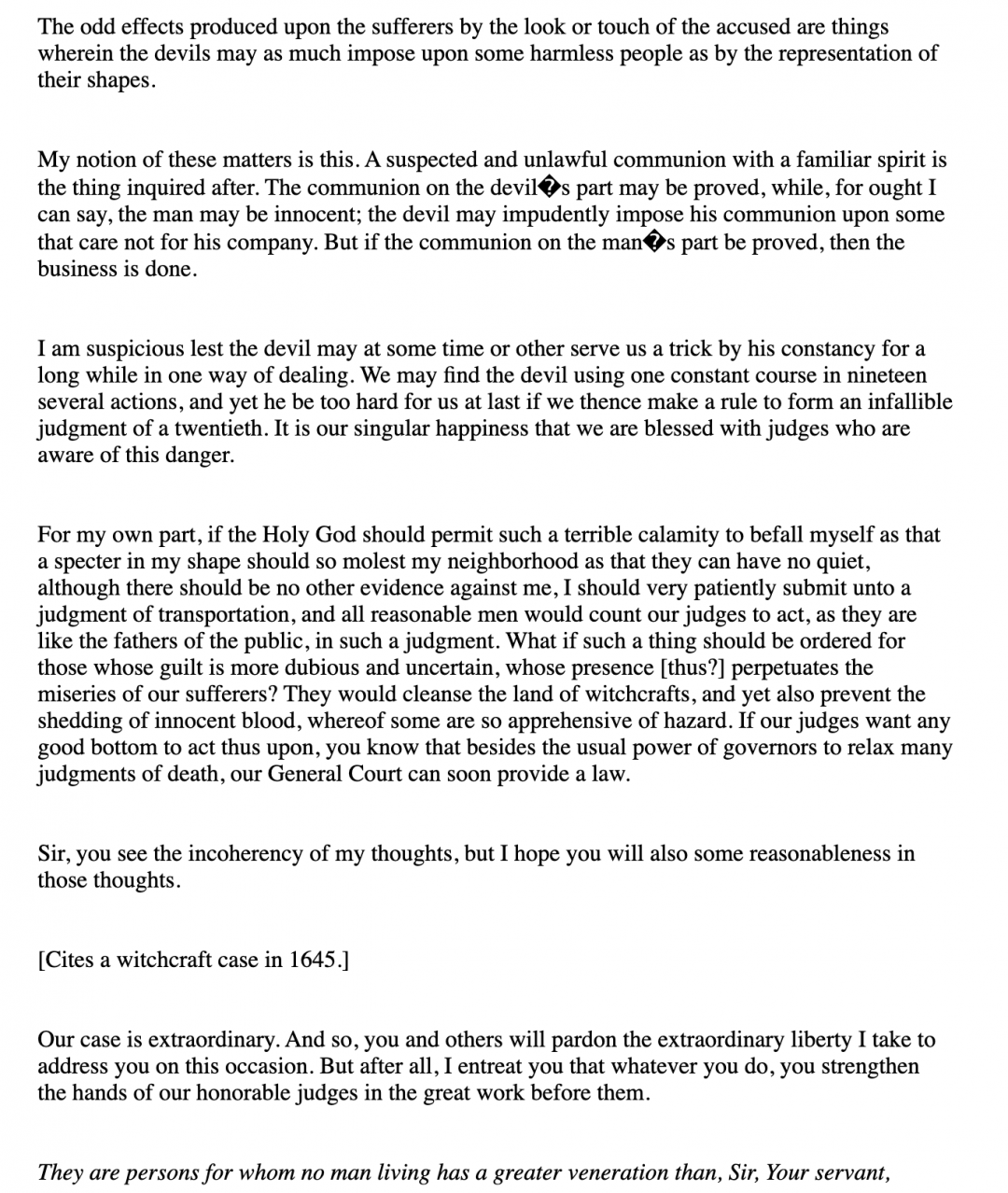


Illustration showing a woman executed by hanging, for the practice of witchcraft, 1692. Published in ‘A Pictorial History of the United States’, 1845. (Photo by Interim Archives/Getty Images)

This historical piece is titled, To John Foster. It is a letter written by a woman who is being accused of being a witch. She is essentially explaining how absurd some of these accusations are, and asking for a consideration for mercy. This was written in 1692, when the witch trials were very popular. During this time, which trials were very popular is Salem Massachusetts. During the Salem witch trials, the “Belief in witchcraft was widespread in the seventeenth century. Prior to the dramatic episode in Salem Village, almost 300 New Englanders (mostly middle-aged women) had been accused of practicing witchcraft, and more than 30 had been hanged.” 1 Women were believed to be influenced by the devil and were witches. This transpired when a woman by the name of Tituba was influencing a group of girls to act in an absurd manner. She eventually confessed to doing Satan’s work. This quickly spread into a mass hysteria. This lead to many false accusations, and unfortunately hangings to many girls of whom were accused. These “witch trials are often taken as a lens to view the whole Puritan period in New England and to serve as an example of religious prejudice, social persecution and superstition.” 2 The witch trials offer commentary on a lot of underlying issues in this time period, such as views on religion and social status.
This piece offers a lot about the time period that it was created. In this letter, the woman is advocating for herself. Unfortunately, the women who wrote this letter is still unknown, therefore there is no conclusion as to what happened to her. It was rare, before this for women to speak for themselves, let alone fight for themselves. During the witch trials, it became more common for women to fight for and defend themselves, and “The fact that all four accused witches publicly defend their innocence illustrates how the plays highlight the shifting nature of women’s roles in US society as well as the plays’ connections to the women’s rights movement.” 3Women advocating for themselves has many connections to the women’s rights movement, as they are becoming independent. Although the witch trials were targeting women in a negative way, their fighting created a huge change of what women’s roles were in society.
The women writing this letter speaks very matter-of-factly. When trying to get her point across, she states what she believes to be a fact, “My notion of these matters is this. A suspected and unlawful communion with a familiar spirit is the thing inquired after. The communion on the devil’s part may be proved, while, for ought I can say, the man may be innocent; the devil may impudently impose his communion upon some that care not for his company. But if the communion on the man’s part be proved, then the business is done.” 4Although she offers some of her opinions, she does not ever explain how she is feeling through all of this. This may have been done purposefully as, “witch-trials often revolved around the perceived emotion of the witch – for instance, an old woman’s envy or anger deliberately causing a neighbour’s domestic misfortune” 5 During this time, emotions contributed to evidence that a person was a witch. The author of this letter may have been aware of this, and left out her own feelings in hopes of protecting herself.
